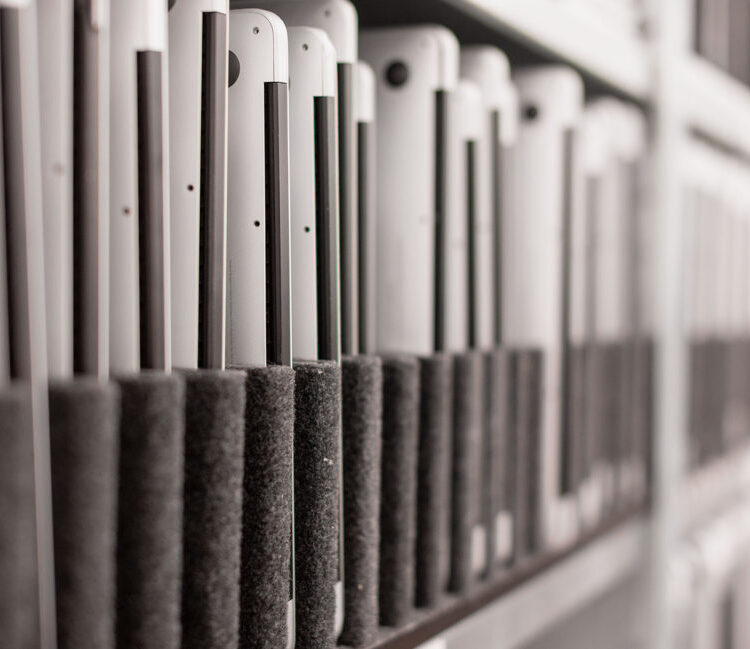Laptop screen grading
This page explains how we work with and grade laptop screens. For full overview of visual and functional grading, read our Laptop grading guide page.
Screen is inspected for physical imperfections (scratches, wear marks, delamination etc) and functional imperfections (discoloration, backlight, spots etc). We have 3 degrees of imperfections:
Normal
Normal imperfections are faults that come from device age and regular use and affect visual grade of the device. For example: wear marks that are nearly invisible when the screen is turned on, is considered normal wear & tear for B grade laptop.
Minor
If physical or functional imperfection is clearly noticeable with working screen, it is considered Working*. Specific fault is described always with fault description. Working* can have wear mark, brighter spots, deep picture-distorting scratch etc. Most of the Working* grade is covered in the previous chapter.
Severe
Faults that make device unusable in current state. These faults include heavy delamination, damage to the LCD panel, screens that do not turn on, white spots that are large, strong or cover most of the screen. Devices with severe faults are considered Grade E.
Normal screen descriptions
Screen Grade A+
Almost perfect screen. Minimal microwear/1-2 hairline scratches.
If screen is turned on, can not have white spots or other similar imperfections (lines, discoloration, dead pixels, spotlights).
Screen Grade A
Similar to A+ screen, but might have visible mini-defects. Allowed defects include:
- Can not have any deep scratches.
- There may be few light hairlines in the middle or clusters of light hairlines near the edges of the screen. Usually only visible under a certain angle and light.
- Few Microchips allowed on screen.
- If screen is turned on, can not have white spots or other similar imperfections (lines, discoloration, dead pixels, spotlights)
P1:Few light hairlines are allowed. Usually only visible under a certain angle and light.
Screen Grade B
Device, which has been in everyday use and has the following wear marks:
- Light keycap marks on the screen (cap corners more visible).
- Deep scratches are not allowed but can have hairlines.
- Generally looks fair at an arm’s length.
- Small, dim spots allowed.
- 1-2 dead pixels allowed.
NB! Delamination issues come with fault description
NB! Spotlights is not allowed– comes with fault description
P1: Light spacebar mark on an otherwise OK screen
P2: Spacebar mark zoomed in
P3: Keycap corners marks visible, but generally no heavier keycap marks.
P4: dim spots allowed.
P5: Too bright spot, Working* – Minor LCD fault (spots) description
P6: 1-2 dead pixels allowed
Screen Grade C+ and C
Screens with clearly noticeable wear and tear, which include:
- Noticeable keycap marks allowed on screen.
- Scratches on the screen. While screen is turned on, light cannot “break” or “be cut”.
- Dust allowed in the corner and sides.
- 1-2 dead pixels allowed on the screen.
- Dim spots allowed
NB! Ports with gluemarks are considered Grade C Working
NB! Delamination issues come with fault description.
NB! Spotlights is not allowed – comes with fault description.
P1: Allowed wear on the screen.
P2: Some dust in the corner allowed (halb pildi näide, ei näe tolmu normilt)
P3: Allowed wear on the screen.
P4: Too heavy wear for C+/C. Working* – minor LCD fault (wear marks).
P5: 2 dim spots allowed

